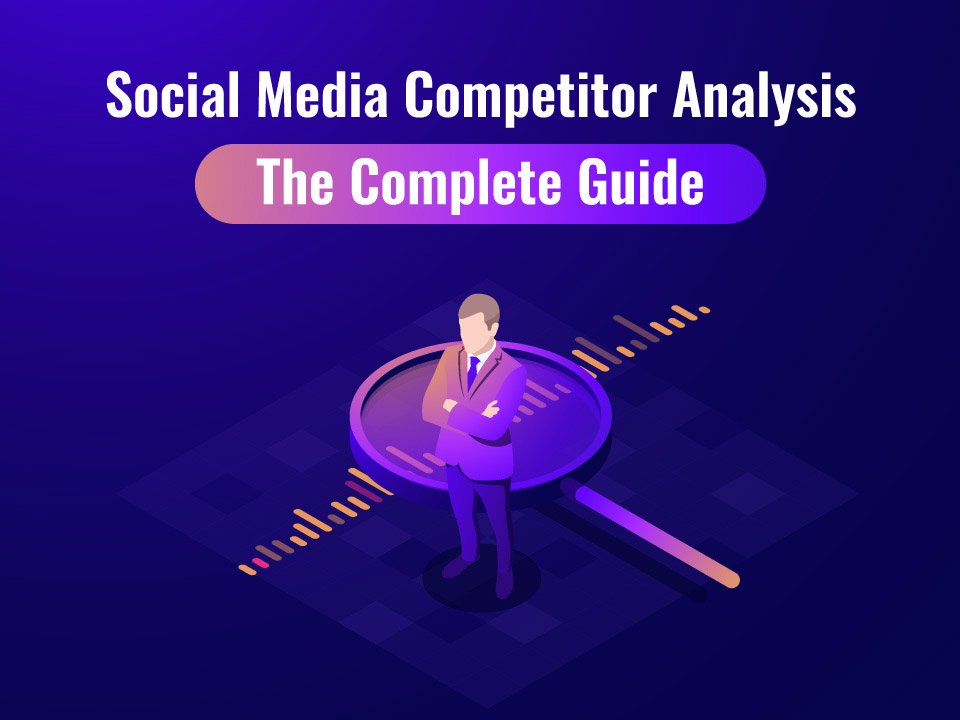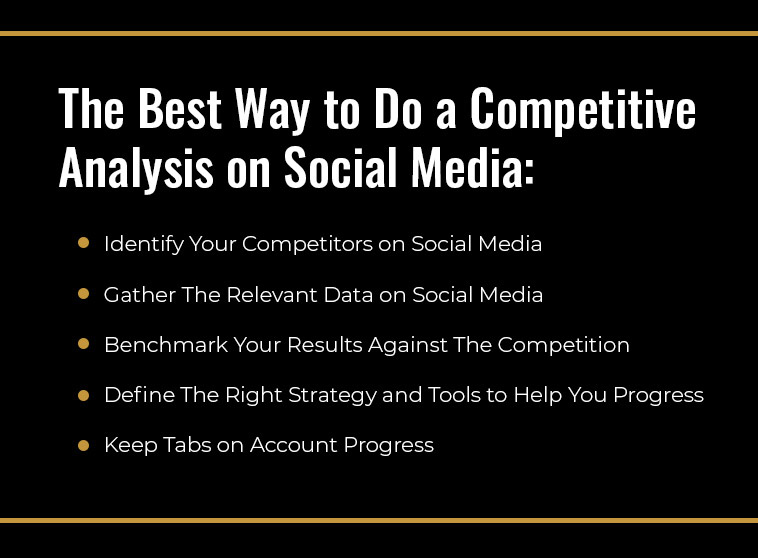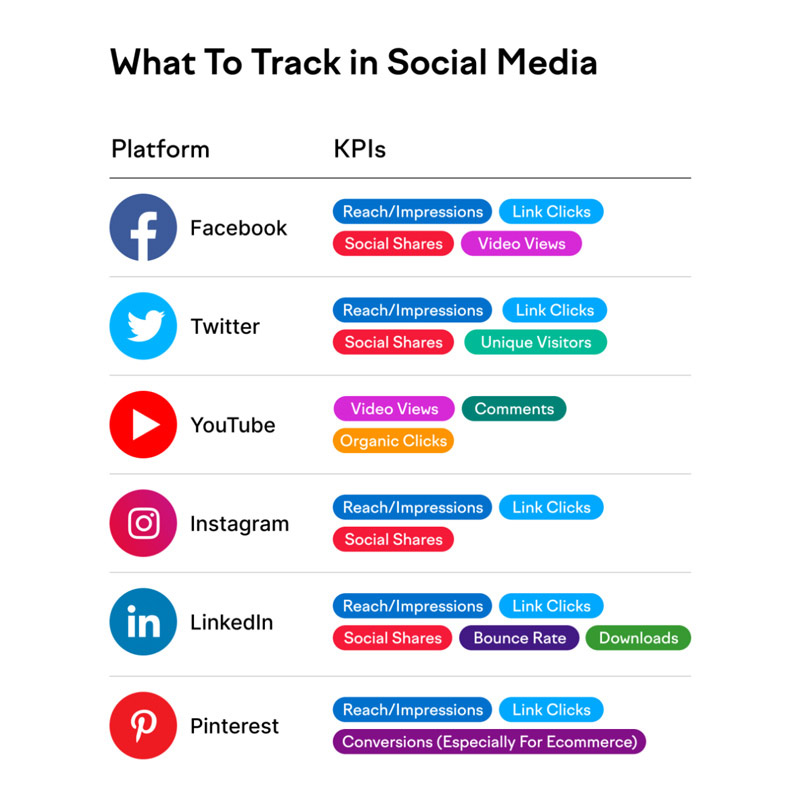
Social Media Competitor Analysis: The Complete Guide
Nearly 85 percent of businesses rely on social data as a primary source of business insights. They’re essential to your growth strategy because almost 4.6 billion individuals use social media networks. There’s no doubt about it: fierce brand rivalry roams the web, and it’s not news anymore. So, how can you outcompete your brand rivals and expand your company on social media? The answer is social media competitor analysis.
Social media is a unique platform for every business, and so is the experience of your competitors. Learning from one another can be beneficial to all parties involved. But how do you ensure you get the most out of this information? Competitive social media analysis will allow you to clearly understand what your market looks like and helps identify any user needs. This research process is known as benchmarking, and we’ll focus on how this concept applies when looking at the competition on social media platforms.
Competitor analysis is researching your competitors to understand their strengths, weaknesses, opportunities, and threats. This guide will cover what social media competitor analysis means, its benefits, the steps to take when performing this analysis, and a list of tools you need.
What Is Social Media Competitor Analysis?
The step of analyzing social media rivals is evaluating your competitors on social media to identify possibilities and develop brand development strategies. This analysis allows you to discover your competitors’ strengths and flaws, meaningful information about your target audience, why they’re interested in them, and how they perform with social media marketing.
Competitive analysis via social media is key to creating and maintaining a relevant digital strategy. It’s a systematic procedure for monitoring and analyzing data about your competitors’ content, customer service, and social media campaigns. This will assist you in gaining insights into what works in your industry, areas where you may improve, and ideas on how to update your marketing plan.
Why Is It Necessary To Conduct A Social Media Competitive Analysis?
It’s essential to keep an eye on your brand’s performance, but don’t forget to monitor and analyze your competitors. A social media competitive analysis will enable you to:
- Identify and keep an eye on your competitors.
- Understand which social networks they use.
- Discover their audience profile and behavior.
- Find out what is the best time to post.
- Get inspired by their content.
- Find gaps in your social media strategy and adapt them accordingly.
- See where you rank in your industry.
- Discover new market trends.
Read More: HOW CONTENT MARKETING FITS INTO YOUR MORTGAGE BUSINESS
What Is The Best Way To Do A Competitive Analysis On Social Media?
Let’s look at the fundamentals of performing a social media competitive analysis and increasing your marketing efforts.
1. Identify Your Competitors On Social Media
The first step is to get to know your rivals. Keep in mind that there are a few different types you should think about.
Direct Competitors
An excellent way to start is by analyzing your direct competitors. They most likely share your target audience and offer similar products or services.
Indirect Competitors
Don’t forget to look into the competition beyond your search engine, which may be high-end or low-end alternatives in your field. Such new knowledge might help you solve the puzzle of who your target audience is. A keyword search on Google is an excellent place to start your rivalry analysis. Check out who ranks highest against the top 10 industry and product keywords that are relevant to your business. This can provide you with an indication of who you’re up against. Also, keep an eye on companies that spend money on Google advertising to have their names appear at the top of organic searches.
2. Gather The Relevant Data On Social Media
Now that you have found your competitor group, it is time to look more closely at their strengths and weaknesses when using social media. Some questions you should answer are:
- What social channels do they use?
- How large is their following, and how fast does it grow?
- How often do they post?
- What kind of content do they offer?
- How does the audience engage with their posts?
- What kind of hashtags do they use?
- How fast do they respond to comments and engage with the community?
- What makes them unique?
The metrics you want to focus on depending on your business goals and your company’s establishment. New startups should prioritize building a customer base, but engagement might be the metric to watch for more established companies. In-depth tools also make it easier to follow your competitor’s marketing strategies.
3. Benchmark Your Results Against The Competition
After gathering all of this valuable information, it’s a good idea to put it in an excel spreadsheet or explore the possibilities of utilizing more advanced tools to save time and gain deeper insights. This is when you should take the next step towards developing your social media strategy by asking yourself:
- Which metrics indicate growth?
- What content works for your competitors and what doesn’t? And why?
- Is there consistency in their social media strategy?
- Are there any trends that are affecting your brand?
You may also use the S.W.O.T analysis to obtain a clear picture of where you stand compared to your competitors and better understand your brand’s strengths, weaknesses, possibilities, and threats. This will aid in the adaptation and improvement of your social media plan.
A clear understanding of your brand’s strengths and weaknesses is essential to success. By performing a social audit at least every six months, you can identify which areas need improvement and adjust your strategy accordingly. Staying on top of your social media game has never been easier with tools like Benchmark.
Another critical consideration is comparing your content strategy to your competitors. Are your rivals creating unique, curated, or sponsored material on social media? Do they prefer motivational or educational content? What types of formats do they employ? This may lead to a data-driven improvement in your content strategy, allowing you to interact more effectively with your community.
4. Define The Right Strategy And Tools To Help You Progress
Based on the information gathered and your rational analysis, it’s time to devise your social media strategy. But the difficult work with competitive research doesn’t end here. You need to carry out such an investigation at least every six months to stay current with all trends.
You could manage this process in one of two ways — manually or with high-tech tools. You should take into account the following metrics that occur weekly related:
- Audience
- Content
- Engagement
- Paid media
- Hashtags
Using a tool like Benchmark allows your business to save time and glean better insights. The solution can:
- Translate your data smoothly into an actionable plan
- Take the guesswork out of your social strategies
- Help you understand what, when, and how often to post
With more than 100,000 brands using it across all major social media platforms, this tool will help you understand what is driving results. You’ll likely need to share your findings with teammates or superiors, making this an essential piece for anyone wanting to prove success.
5. Keep Tabs On Account Progress
After you finish your social media competitive analysis, the work isn’t done yet. You need to stay updated on your profile and the competition. Doing this enables you to:
- Monitor brand progress
- Notice new competition quickly
- See if your social media strategy is working
- Identify new growth opportunities
- Keep your marketing plan up-to-date
Industry and social media trends are constantly changing, so staying on top is essential. Set aside sometime each month (or however often you want) to check out what your competitors are doing on social media. This will help you identify any new opportunities or threats.
The Bottom Line
Competitive analysis of social media is vital for brand growth since it allows you to create a solid social presence and develop customer trust and brand reputation. You may analyze your social media profiles by following the techniques presented above. Determine your company’s goals and convert analyzed, organized data into context-rich insights to help you with your social media strategy.
If you’re ready to up your social media game and get ahead of the competition, it’s time to start collecting data that matters and putting it into practice. The more you do this exercise, the better business outcomes you’ll see. Looking for a strategic partner for your business growth? Book a FREE call with our experts for your strategic social marketing management.





